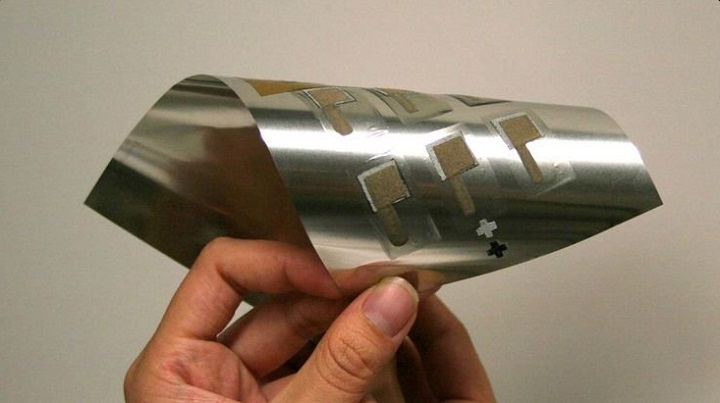Imagine owning a cellphone that’s as slenderized and flexible as a credit card. Sounds unusual, right? Well, these shapes would be possible if there were batteries that were just as slim and malleable to power these devices. Turns out, these batteries are the main blockade to modern electronic design.
Imprint Energy, a small startup battery technology company, is using research developed at the University of California, Berkeley to create a battery that would allow device makers to stray away from the restraints of the lithium-ion battery.
Currently, Imprint Energy is using zinc rather than lithium in their batteries as well as screen-printing technology. The young startup company has already made low volumes of their thin, energy-dense, pliable and rechargeable batteries available to pilot customers.
According to Devin MacKenzie, Imprint Energy’s Chief Executive Officer, it’s difficult to make lithium-ion batteries slender and malleable as there is a “lot of packaging” required to enclose the extremely reactive lithium in the battery from the surrounding environment. Having to add packing to seal off the lithium makes lithium-ion batteries bulky and stiff. The Macbook Air, for instance, is one of the slimmest laptops in the world but it is still restricted to limitations due to it’s size and the weight of the batteries.
Overall, Imprint Energy’s batteries will attack the problem of bulkiness and stiffness by tossing out lithium, a silvery-white alkali metal and not just the title of a Nirvana song. Imprint Energy, who currently has 8 staff members, was established in 2010 by Christine Ho and Brooks Kincaid, two UC Berkeley PhD students.
So how does this work? Well for starters the company uses zinc for the anode part of the battery and then combines it will a polymer electrolyte and a cathode strictly made of a metal oxide. A battery has an anode on one side and a cathode on the other side, with an electrolyte in between the two sides. In regards to Imprint Energy, zinc ions will be moving from the anode side to the cathode side through the electrolyte. This will cause a chemical reaction which allows electrons to be accumulated along the way.
MacKenzie has stated that zinc has been used in batteries for a number of years but it has been hard to make these zinc batteries rechargeable. Why? Because when zinc gets mixed with a liquid electrolyte, it produces dendrites — small fibers that evolve and stand in the way of the charging reaction. Luckily, Imprint Energy resolved this barrier by using an electrolyte solely made of a solid polymer which was combined with zinc.
As you might have already guessed, Imprint’s batteries that feature zinc will have less “packaging” as zinc is a metal that is not extremely reactive with the surrounding environment. To simplify, Imprint’s batteries will be a lot slimmer. Additionally, these batteries would be as small as a couple hundred microns thick. As a result, these batteries could power small digit smart labels.
Perhaps one of the most promising aspects of Imprint’s batteries is that they are a lot more secure and far less toxic. Do you prefer to keep your cell phone device in your pocket? If so, zinc batteries are the safer option. Or perhaps it’s not a cell phone and it’s a heart device sitting inside your chest cavity. Now, imagine if that battery trickles lithium into your body. That’s a big problem.
Mentioned previously, Imprint Energy has also started to print out batteries via screen-printing technology. The majority of these batteries are created by covering the materials onto foils which are then massed into cells. Clients can pay a premium for these batteries to be created into shapes of their choosing and then the battery materials are printed onto the screen in that shape.
Right now, Imprint Energy can produce 100 cells a day on the machines in its lab sitting behind the Oakland Airport in Alameda, California. Though this does not compare to what Asian battery sectors produce, in possibly in two to three years, Imprint will start manufacturing to a commercial scale.
The California-based company is still in infancy but the end goal is to enter the wearable electronics market. As of right now, the wearables industry is going to obtain the most benefits from the batteries thin shape and from using safer materials. If you’re thinking about investing in the wearables industry, you should know that these zinc poly batteries will allow for a new style of device to enter the market which is extremely modernized and functional.
Featured Image: twitter











